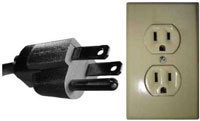giovedì 25 marzo 2010
07:47 | Pubblicato da
Ente del Turismo della Giordania JORDAN TOURISM BOARD |
Modifica post
In Rainbow Street all’angolo con Othman Bin Affan Street, si trova un’anonima casa. Quel che la rende degna di nota qui, è il fatto che sia diventata sede di Counterparts, una delle mostre d’arte più entusiasmanti degli ultimi mesi ad Amman. Una collettiva di artisti giordani e internazionali che hanno “occupato” e reinterpretato uno spazio neutro ed abbandonato. Un luogo selezionato apposta perché inserito nel contesto urbano con cui ne condivide l’essenza. Striscioni in giardino che inneggiano slogan deliranti come “ogni cittadino ha diritto ad interrompere e ad una giusta quantità di banane” accompagnano il visitatore in questa mostra che si snoda su tutti i piani dell’edificio e che svela tutta la sua suggestione in quei rari momenti in cui non si incontrano altri visitatori: una sorta di galleria delle favole che potrebbe svanire da un momento all’altro dal grigio della pietra in cui è inserita. Un esperimento riuscito che ha trasformato una villa praticamente “invisibile” in una meta culturale degna di nota. Da visitare prima che scompaia…
Words by John Lillywite.
Building in Transition: a temporarily empty home is transformed into the site of an engrossingly new kind of art experience.
House 28 in transition.
THE UNASSUMING HOUSE ON the corner of Rainbow Street and Othman bin Affan Street, No. 28, has been the unlikely location for one of March’s most creative art shows.
JO visited the exhibition Counterparts several times, and while House 28 was sometimes crowded, we found the experience the most impressive when it was completely deserted. The house exudes an eerie, dream-like aura: it feels like a space in transition, a sort of fairy-tale gallery that could disappear into gray stone the moment you leave or the next time you visit.
Banners fill the front garden. One reads: “every citizen has the right to interrupt and a decent amount of bananas,” another: “capitalism sucks so use a condom.”
A hallway on the bottom floor leads down a graffiti-covered corridor to a bright pink bathroom. This floor is the work of Ahmad Sabbagh and Michael Schinkoethe (a.k.a. Typism), a pair of urban artists from the group Blouzaat. In a third room, viewers are greeted by a giant mural of a hand making a peace sign (or, depending on whose perspective the image is from, it could be an obscene gesture). A mosaic of smaller pieces were illuminated by the half-light of a Chinese lantern.
The upstairs is dedicated to the work of Dina Haddadin (whose pieces were also on show at Nabad gallery in March). Her portion of the exhibition, titled Transit, included more chalk drawings in her inimitable style, as well as a video installation including “The Rainbow Cinema House” and “Memento,” pieces which looked at construction as part of Amman’s “steetscape.” Her “Heroes” drawings lent a human touch to an exhibition which at times could feel disturbingly impersonal, set as it was in what sometimes felt like an abandoned museum to art, or a creative’s playpen.
Counterparts draws its name from the different types of art and styles involved, but much of its strength comes from the fact that the house itself is the artwork: a single and peculiar proposition which, despite its various rooms, is best taken as a whole. It's a sort of haunted house, but full of art as opposed to cobwebs and warlocks.
Ahmad Humeid, who runs the strategic design firm Syntax, described the circumstances of the house's abandonment on his blog, 360east.com. It was owned by an elderly landlady and her bedridden husband (who once rented it out to interns at Syntax). When the couple passed away, the house entered a state of transition—waiting for local businessman Zeid Al Goussous to transform its forlorn exterior into a shiny new restaurant.
But a group of artists and architects came along and, with the generous permission of Gussous, temporarily transformed the house into something quite different. According to Khalid Sedki, a founder of the underground local arts magazine Interruptions, the house was perfect “because it already had a story,” and it was “negotiating” with the city and community in way “polished galleries” might find difficult.
“We wanted something that worked with its context and that took its essence and substance from a shared existence with the city,” Sedki explains. “All of this was quite alternative for Jordan.” At the same time, the artists wanted somewhere in transition, a place that was changing or about to change or, as Haddadin writes in her exhibit notes, “passing quickly into and out of existence.”
Thankfully, though, the show is more an experience than a postmodern intellectual journey. Although some of the individual pieces are a touch self-aware, the Counterparts project transforms a fading villa into a distinctive cultural destination, which in itself is no mean feat. The artists have a compelling space, and they use it wisely.
If you haven't stopped by House 28 yet, take the chance to do so before the show disappears.Counterparts was recently extended, and will be showing at House 28 until March 27.



